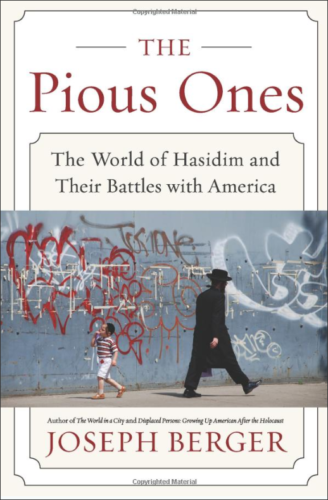
As the population of ultra-Orthodox Jews in the United States increases to astonishing proportions, veteran New York Times journalist Joseph Berger takes us inside the ever-fascinating insular world of the Hasidim to explore their origins, beliefs, and struggles—and the social and political implications of their expanding presence in America.
Though the Hasidic way of life was nearly extinguished in the Holocaust, today the Hasidim—”the pious ones”—have become one of the most prominent religious subcultures in America. In The Pious Ones, New York Times journalist Joseph Berger traces their origins in eighteenth-century Eastern Europe, illuminating their dynamics and core beliefs that remain so enigmatic to outsiders. He analyzes the Hasidim’s codified lifestyle, revealing its fascinating secrets, complexities, and paradoxes, and provides a nuanced and insightful portrayal of how their all-encompassing faith dictates nearly every aspect of life—including work, education, food, sex, clothing and social relations—sustaining a sense of connection and purpose in a changing world.
From the intense sectarian politics to the conflicts that arise over housing, transportation, schooling, and gender roles, The Pious Ones also chronicles the ways in which the fabric of Hasidic existence is threatened by exposure to the wider world and also by internal fissures within its growing population. What lies ahead for the Hasidim, and what lies ahead for American culture and politics as these Ultra-Orthodox Jews occupy a greater place in our society?
Kirkus Reviews:
THE PIOUS ONES
The World of Hasidim and Their Battles with America
Author: Joseph Berger
Review Issue Date: June 15, 2014, Online Publish Date: June 5, 2014
Publisher:Perennial/HarperCollins. Pages: 384. Price ( Paperback ): $15.99
Publication Date: September 9, 2014. ISBN ( Paperback ): 978-0-06-212334-3. Category: Nonfiction
A fascinating behind-the-scenes look at the world of Hasidim.
Longtime New York Times reporter Berger (Displaced Persons: Growing Up American After the Holocaust, 2001) puts decades of experience in reporting on Hasidim to work in this balanced, intriguing account of the American Hasidic population. Surviving the Holocaust, the Hasidic brand of Judaism managed to flourish again in New York and other American cities, and it is now booming in population. Hasidic characteristics—including strict observance of Jewish laws, modest yet conspicuous dress, limited contact with non-Jews and intersectarian disagreements—provide much fodder for the author, who brings Hasidim to life for lays reader through personal stories based on extensive interviews. Ranging from a Holocaust survivor who managed to leave 2,000 descendants at the time of her death to a Hasidic nonconformist with an underground blog, Berger’s work explores a wide spectrum of Hasidic lives and lifestyles. Assuming very little previous knowledge from readers, the author masterfully explains all aspects. Thus, even a reader new to Judaism can learn about the Hasidic world without getting lost. For more expert readers, Berger provides personal depth as well as topical breadth. Filled with plenty of material for further discussion, the book does a service by dispelling many myths, and Berger provides an avenue for wider public understanding and acceptance of Hasidism. The author also points to flaws within the Hasidic community and in their relations with the outside world: deep-seated gender issues, the hushing-up of abuse cases, extortion and intimidation by self-proclaimed modesty police, and the avoidance of certain regulations and zoning laws.
Through Berger’s solid research and approachable writing, readers will gain a clear, well-rounded understanding of who the Hasidim are, where they came from and where they are going as a people.
